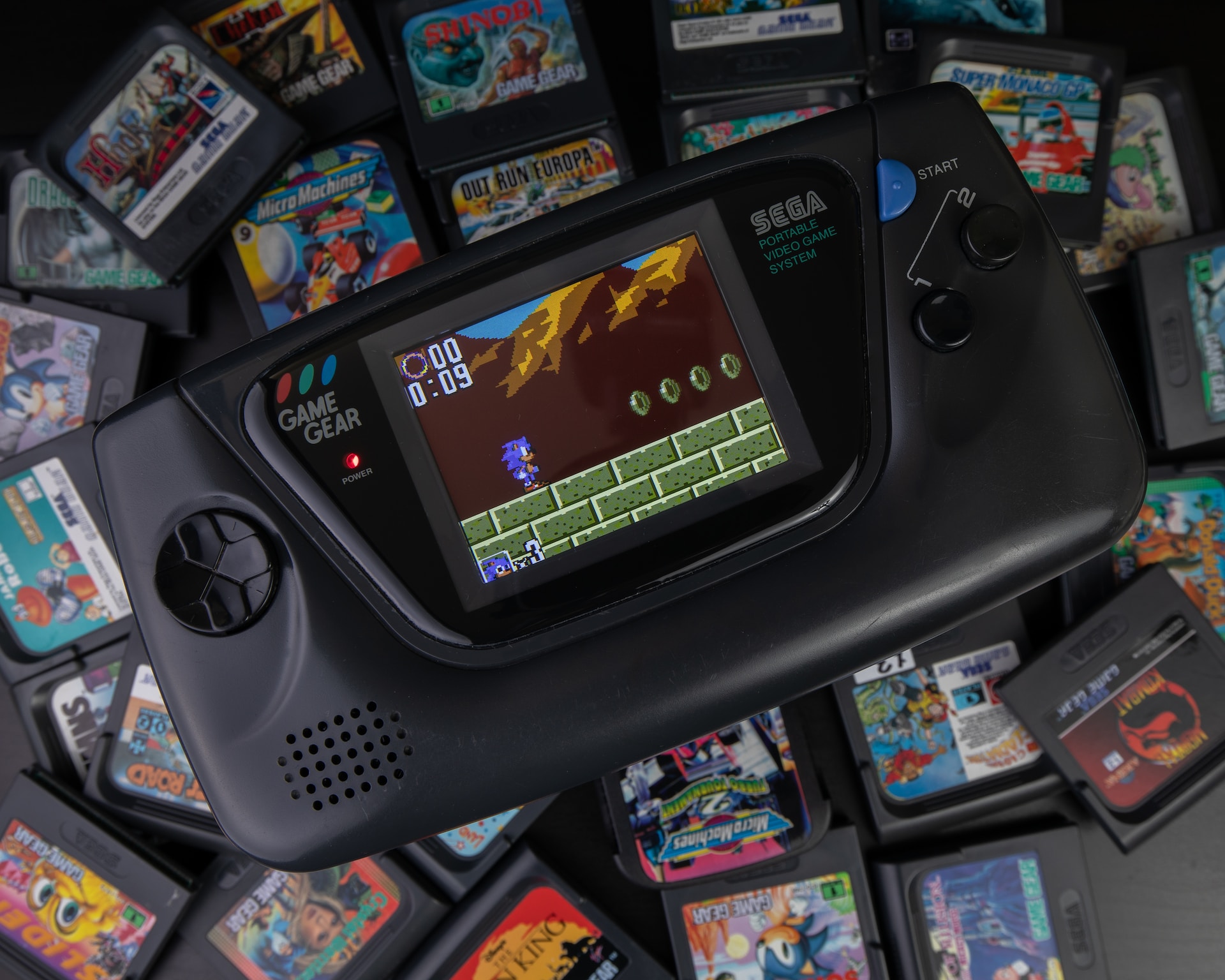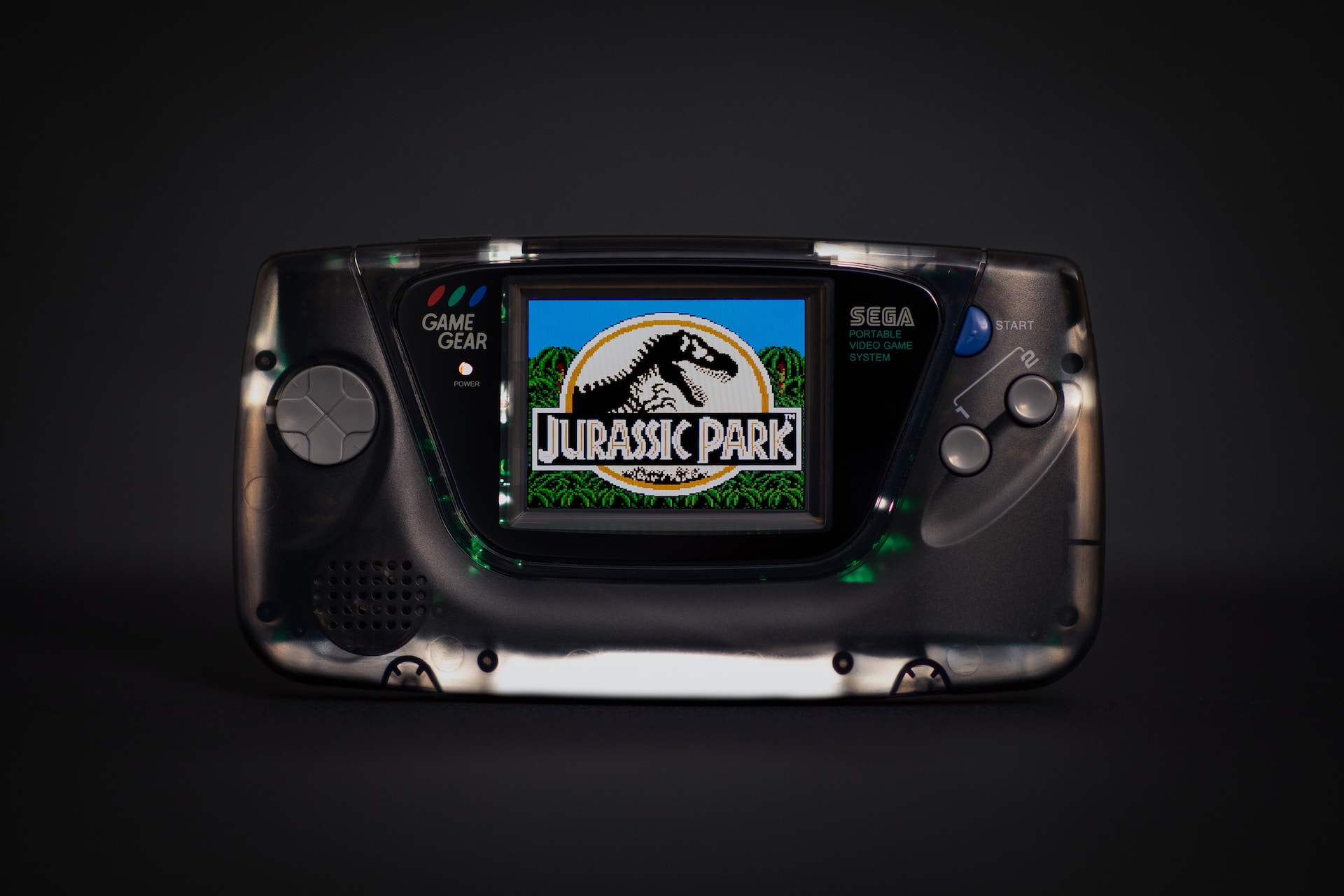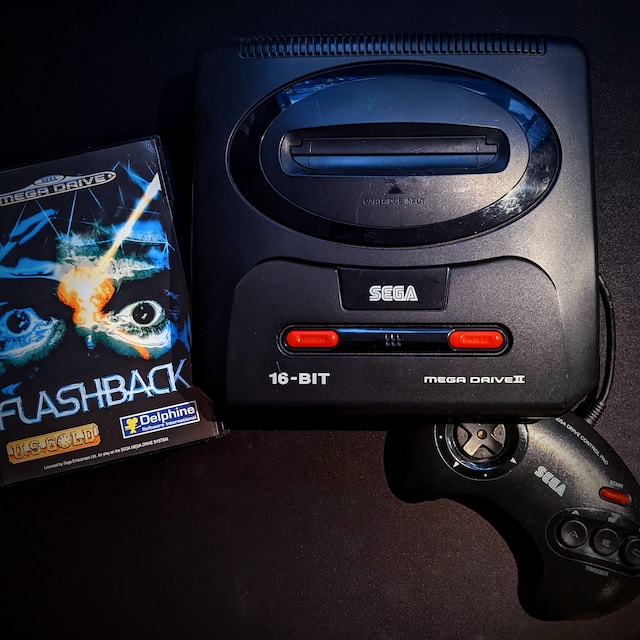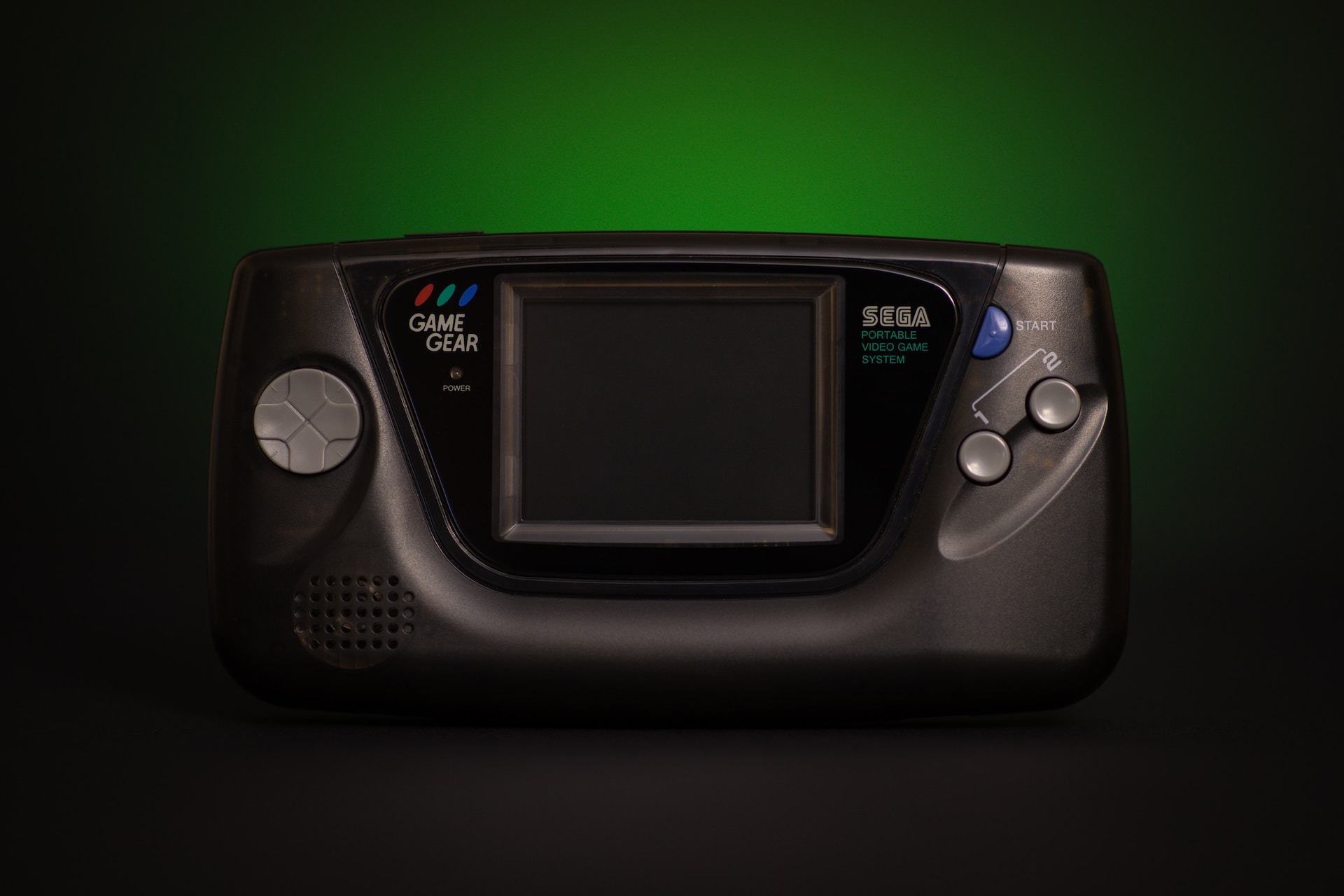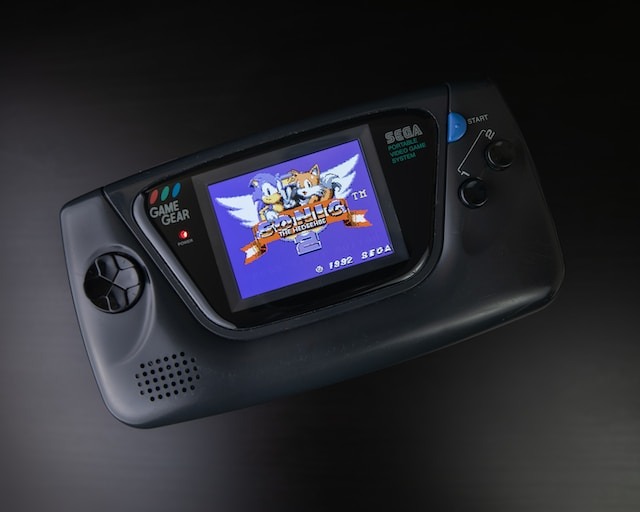Introducing the Game Gear – a pivotal 8-bit fourth-generation handheld game console that left a lasting impact on the gaming scene. Sega unveiled this innovative device on October 6, 1990, in Japan, and it soon became a sensation, captivating gaming enthusiasts worldwide. In this article, we will delve into the Game Gear’s history and its influence on the gaming landscape, both in North America and Europe after its April 1991 release and later in Australia.
The Start Of Game Gear
Developed as “Project Mercury,” the Game Gear burst onto the scene in Japan on October 6, 1990, before making its way to North America and Europe in 1991, and finally arriving in Australia in 1992. Upon its launch, the price tags were set at JP¥19,800 in Japan, US$149.99 in North America, and £99.99 in Europe. [1] Sega’s foray into the handheld gaming arena was a response to the competition posed by Nintendo’s Game Boy, which had already established itself with a 1989 release.
The idea of entering the portable console market was championed by Sega’s CEO, Hayao Nakayama, and the name “Game Gear” was coined by Michael Katz, the newly appointed CEO of Sega of America, with the blessings of Sega’s chairman, Isao Okawa, and co-founder, David Rosen. This handheld console essentially distilled the power of the Master System into a compact form, boasting superior capabilities compared to the Game Boy, most notably a vibrant full-color screen that set it apart from the competition. Hideki Sato, the former head of Sega’s console hardware research and development, explained that Sega saw the Game Boy’s black and white display as a challenge, which spurred them to develop their own color handheld system.
In a bid to outshine their competitors, Sega took inspiration from the design of the Genesis controller when creating the Game Gear. Their goal was to make the Game Gear more comfortable to hold than the Game Boy, so they designed it with curved surfaces and a longer length, aiming for a more ergonomic gaming experience. They also carefully considered the weight of the console from the beginning of its development, aiming for a mass that fell between that of the Game Boy and the Atari Lynx, another competitor with a full-color screen.
Despite its physical resemblance to the Master System, the Game Gear couldn’t play Master System games directly. To play these titles on the handheld, gamers needed an accessory called the Master Gear. The Game Gear’s initial pack-in game was Columns, which was reminiscent of Nintendo’s inclusion of Tetris with the Game Boy during its launch.
Sega faced a challenge entering the handheld console market, as they were behind Nintendo in sales. To expedite their entry, Sega based the Game Gear’s hardware on the Master System, but with a significantly expanded color palette. The Game Gear boasted support for 4096 colors compared to the Master System’s 64, intending to make it easier to port Master System games to the Game Gear. However, this technological superiority came at the expense of battery life. While the Game Boy could run for over 30 hours on four AA batteries, the Game Gear required six AA batteries and could only manage three to five hours of gameplay. Despite these challenges, Sega’s quick launch in Japan was a success. Sega of America’s marketing director, Robert Botch, emphasized the need for a quality portable system that offered features lacking in others, including easy-to-view full-color graphics and high-quality games appealing to a broad range of ages.
Game Gear’s Release
Before the Game Gear’s launch in 1990, Sega had succeeded by marketing its 16-bit home console – the Sega Genesis, as a “more mature” gaming option. Continuing with this approach, Sega positioned the Game Gear as a “grown-up” alternative to the Game Boy. While Sega’s marketing strategy in Japan took a different angle, featuring Japanese women in their advertisements for the handheld, their global marketing efforts consistently portrayed the Game Gear as the “cooler” choice compared to the Game Boy. The handheld sold 40,000 units in its first two days and 90,000 within a month, with over 600,000 back orders for the system. [1]
In North America, Game Gear marketing campaigns included direct side-by-side comparisons with the Game Boy, often drawing unflattering comparisons, including likening Game Boy players to individuals who were overweight and less educated. [2] Many of these commercials were known for featuring the memorable “Sega Scream,” where someone enthusiastically yelled the Sega logo. One particular Sega advertisement from early 1994 went so far as to state, “If you were color blind and had an IQ of less than 12, then you wouldn’t mind which portable you had.” [2] Such advertising tactics sparked outrage from Nintendo, leading them to attempt to organize protests against Sega for allegedly insulting disabled individuals. Sega responded with a statement from Tom Kalinske – the president of Sega America, suggesting that Nintendo should focus on improving their products and marketing rather than engaging in behind-the-scenes coercive activities. Ultimately, this debate had little impact on Game Gear sales.
Europe and Australia were the last regions to receive the Game Gear. Due to delays in obtaining the new handheld, some importers were willing to pay as much as £200 to get their hands on it. Upon the Game Gear’s European release, video game distributor Virgin Mastertronic set the price at £99.99, positioning it as more expensive than the Game Boy but more affordable than the Atari Lynx, which also boasted a full-color system. [3] In the United Kingdom, marketing efforts included the slogan, “To be this good takes Sega,” and featured advertisements with a biker holding a Game Gear. The Game Gear achieved a 16% share of the handheld market in the United Kingdom by January 1992, which increased to a 40% market share by December 1992. [3]
The Sega’s Decline
Sega’s support for the Game Gear suffered due to its primary focus on its home console systems. Alongside the success of the Genesis, Sega was juggling support for two peripherals for its home system; the Sega CD and the 32X, while also developing its new 32-bit system – the Sega Saturn. Moreover, despite achieving sales of 10.62 million units by March 1996, including 1.78 million in Japan, the Game Gear never managed to rival the monumental success of its primary competitor, the Game Boy, which sold over ten times as many units. [4] The Game Gear’s late-stage sales were further hampered by Nintendo’s release of the Game Boy Pocket, a smaller and more energy-efficient version of the Game Boy that operated on just two AAA batteries.
Plans were initially in place for a 16-bit successor to the Game Gear, aiming to bring Sega’s handheld systems into the fifth generation of video games. However, this successor never materialized, leaving only the Genesis Nomad – a portable version of the Genesis, to step into its shoes. Importantly, the Nomad was designed to complement the Game Gear rather than replace it. Sega representatives made it clear in press coverage leading up to the Nomad’s release that the company was not dropping support for the Game Gear in favor of the Nomad, emphasizing that “We believe the two can co-exist.” Despite the Nomad’s release in 1995, Sega officially discontinued support for the Game Gear only in 1996 in Japan and in 1997 worldwide.
Although Sega had ceased support for the system by 2000, a third-party developer, Majesco Entertainment, reintroduced the Game Gear in 2000 at a price point of US$30, with games retailing for US$15. [4] New games, such as a port of Super Battletank, were released for this version. It remained compatible with all previous Game Gear games but had some incompatibilities with the TV Tuner and certain Master System converters.
However, over a decade later, on March 2, 2011, Nintendo announced that their 3DS Virtual Console service on the Nintendo eShop would feature games from the Game Gear, revitalizing interest in the classic handheld system. [5]
Best of Sega – Game Gear’s Game Library
1. Gunstar Heroes – This game offers a prime example of how a handheld console can cater to specific gaming experiences, prioritizing accessibility and ease of use. This run-and-gun sci-fi shooter stands out as a visually stunning, seamlessly playable title that leverages the Game Gear’s backlit color screen to provide an exceptional gaming experience. However, what sets Gunstar Heroes apart is its ability to effortlessly engage players. The gameplay is not only easy to grasp but also immensely addictive to master. The sound effects and music are not only catchy but also easily recognizable, enhancing the overall immersive experience. Gunstar Heroes succeeds in keeping players enthralled, compelling them to return repeatedly to refine their mastery of the game’s mechanics.
2. Shining Force: The Sword Of Hajya – This stands as a notable entry in the RPG genre for the Sega Game Gear, an era when RPGs were steadily gaining popularity. However, it wasn’t until the latter half of the 90s that Pokémon would solidify RPGs as a staple in the handheld gaming market. Shining Force offers a complete, old-school RPG experience with all the elements fans of the genre adore. This includes an expansive over-world map, meticulous inventory management, a captivating fantasy narrative, and strategic turn-based combat with a party mechanic. What sets Shining Force apart is its ability to deliver a full-fledged RPG experience, complete with hours of gameplay that immerse players in a rich fantasy world filled with intricate concepts. Shining Force’s extensive content serves as a testament to the genre’s capacity to thrive on handheld platforms, foreshadowing the eventual dominance of games like Fire Emblem in the handheld RPG market in the modern era.
3. Ninja Gaiden – A challenging ninja action platformer known for its relentless difficulty, made its way onto the Game Gear, and it’s just as demanding when played on the go. This game doesn’t pull any punches – every enemy is strategically placed and seems hell-bent on pushing players to their limits, relentlessly chipping away at their health bar. The bosses, in particular, are grueling tests of patience and skill, making every level completion feel like a Herculean feat. Hence, Ninja Gaiden stands as the ultimate assessment of reflexes and determination, squarely aimed at those with nerves of steel and a taste for punishing gameplay. If players are seeking a game that will challenge them down to every pixel and push them to their limits, Ninja Gaiden is the series that will consistently rise to the occasion. It’s not for the faint of heart or the inexperienced, but for those who relish an unrelenting gaming challenge.
4. Sonic The Hedgehog 2 – The iconic Blue Blur, is no stranger to pushing the boundaries, even when it comes to technology. This 16-bit superstar made a surprising leap back to the Master System and skillfully maneuvered onto the Game Gear, ensuring that fans could enjoy his energetic platforming adventures on the go. The Game Gear version of Sonic the Hedgehog 2 masterfully condenses most of the original game to fit the smaller screen, emphasizing fast-paced platforming and exhilarating boss battles. While it may not have achieved the same cult status as its Genesis counterpart, it undeniably delivers an exciting dose of high-speed thrills that keeps players on the edge of their seats.
5. Shinobi 2 – This game is an irresistible offering that lets players step into a world where ninjas hurl cartoonish bombs at skeletal adversaries within gritty industrial warehouses. It faithfully captures the essence of Sega’s beloved ninja side-scrolling series, replete with its trademark campy charm, captivating visuals and soundscapes, and hordes of formidable enemies that fans of the series have come to expect. Shinobi 2 includes Mega-Man-style superpowers, which empower players to navigate an array of diverse settings. This diversity results in a wealth of imaginative scenarios and endlessly replayable situations, encouraging players to return again and again for fresh challenges. Shinobi 2 successfully delivers the essence of ninja action on the go, earning it a well-deserved spot in the gaming hall of fame.
Conclusion
Despite encountering several hurdles and fierce competition, the Sega Game Gear left a lasting imprint on the gaming landscape. Sega’s entry into the handheld gaming arena with the Game Gear highlighted their adaptability and innovation in response to industry changes. While it didn’t dominate like the Game Boy, the Game Gear found its niche with its advanced hardware, vibrant color screen, and a library of captivating game titles. It demonstrated the handheld’s ability to deliver enjoyable gaming experiences within its limitations. Also, the Game Gear’s resilience is noteworthy. Amidst various console projects, Sega managed to create a handheld system that showcased their commitment to providing quality gaming on the go.
References
(1) Wild, Kim (2009). “Retroinspection: Sega Game Gear”. Retro Gamer. Imagine Publishing Ltd. (41): 78–85.
(2) Kapa, Damien (2005). “Sega Game Gear”. Retro Gamer. Live Publishing (17): 26–35 – via Internet Archive.
(3) “Geared For Success” (PDF). Sega Force. No. 16 (April 1993). March 4, 1993. p. 17. Archived (PDF) from the original on March 29, 2016.
(4) Buchanan, Levi (October 9, 2008). “Remember Game Gear?”. IGN. Archived from the original on June 23, 2018. Retrieved March 29, 2009.
(5) Newton, James (March 3, 2011). “Sega Names First Game Gear Games for 3DS Virtual Console”. Nintendo Life. Archived from the original on June 23, 2018. Retrieved July 8, 2013.

